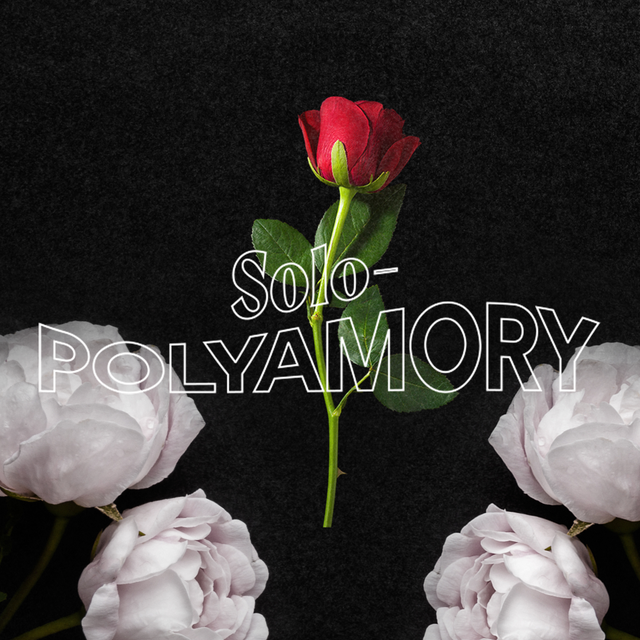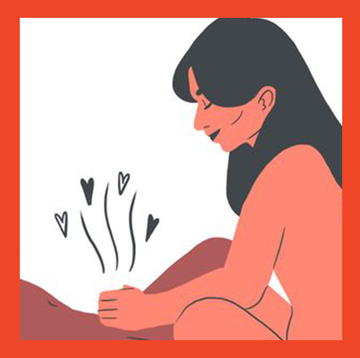So correct us if we’re wrong, but we’re guessing you’re probably familiar with polyamory, a form of non-monogamy in which people maintain multiple romantic relationships at the same time. But what about solo polyamory? Essentially, solo poly is a relationship style in which people see themselves as their own primary partner and prioritize their commitment to themselves over commitments that traditionally come with a partner.
We know what you’re thinking. No commitment? No expectations? Sounds like pretty much the same thing as just being single or dating around without any exclusive titles, right? Wrong. Solo polyamory is an active choice rather than something that happens based on circumstance, and there are a number of different ways it can look in relationships.
“Solo polyamory is a form of ethical non-monogamy practiced by individuals who enjoy multiple romantic and/or sexual relationships at the same time, and who still want to maintain an independent or ‘single’ lifestyle,” says Alice Child, certified somatic sexologist and founder of Vulva Dialogues. “This could mean they don’t want to live with a partner [or partners], share finances, have one ‘primary’ partner, operate within relationship hierarchies, or experience certain relationship milestones (e.g., marriage).”
Basically, there’s a lot more to solo polyamory than just putting yourself first, rejecting labels, or “keeping things casual.” Below, experts answer all your questions about solo poly, including how to know if it’s right for you and what makes it different from regular old-fashioned polyamory.
What is the difference between solo polyamory and polyamory?
Solo polyamory is a specific relationship style that falls under the umbrella term of non-monogamy. “Solo polyamorists typically reject any sort of hierarchical structure or view themselves as their primary partner,” says Brooklyn-based sex therapist Annie Block. While most traditional romantic relationships follow a typical “relationship escalator” with a particular order of steps marking how serious the relationship is—meeting each other’s parents, moving in together, getting a dog, etc.—solo polyamorists don’t usually hold themselves or their relationships to any such timelines.
As you may have guessed from the name, solo poly is a type of polyamory, “a form of non-monogamy rooted in the belief that you can love multiple people,” says Block. “There is a myriad ways those who identify as polyamorous actually engage in and structure their relationships.”
Like polyamorists, people who identify as solo poly may forge and maintain multiple romantic and/or sexual relationships at once, but solo polyamory generally places an emphasis on independence and autonomy within and outside of those relationships.
How do you know if solo polyamory is right for you?
If you’re interested in exploring solo polyamory, it’s a good idea to consider what your core values are and how your relationship fits into those values, if at all.
“If you really prioritize alone time, if you don’t see yourself merging finances or moving in with a partner, and if you’re not interested in the institution of marriage, then maybe solo polyamory will be a good relational framework,” says Gabrielle Alexa Noel, director of marketing and lead portal developer at #open. “Even if you are open to those things but want the freedom to configure your relationships in ways that don’t assume they will happen, solo polyamory could be for you.”
Some misconceptions about solo polyamory
To those who aren’t familiar with solo polyamory, it might sound like “playing the field” without any intention of forming meaningful connections. However, that couldn’t be further from reality.
“Not only is there strong communication, but a lot of people who identify as solo polyamorous are forming healthy and sustainable connections with other people,” Noel says. “I try not to assume what people’s personal definition of ‘solo polyamory’ is, and I think labels are flexible enough to allow that. At the same time, I think people do solo polyamorists a huge disservice when they assume they’re only interested in casual connections.”
Another common misconception is that solo polyamory is “basically being single.” According to Block, “Practicing solo polyamory is an intentional choice and rejection of mono-normativity and traditional views on how relationships should progress” whereas being single is more coincidental. Moreover, people who practice solo polyamory can and do maintain meaningful emotional connections with partners, while being single generally wouldn’t include any such partnerships.
How can someone open up their relationship style to solo polyamory?
If you’re thinking of evolving your relationship style to solo polyamory, but you’re already in a partnership with a different relationship structure, try to get a clear idea of what that would mean for you and for your relationship. The clearer you express your needs, the easier it will be for your partner(s) to process them and act accordingly.
“Some things to consider are how this will impact the relationship on an emotional and logistical level. Are there areas where you might be willing to make compromises?” Block says. “For example, if currently living together, would having your own room suffice, or do you need to live fully separately? You don’t need to bring these things up right away, but the more clarity you have on your needs, the more stabilizing the conversation will be for your partner(s), who may have a lot of questions.”
Remember, what people want out of relationships isn’t a fixed concept. It’s possible to find yourself in relationships that looked one way during part of your life only to realize that it may have not worked for you. “We all experience changes over time when it comes to our sexuality, bodies, and desires,” says Child. “It’s time we care less about what society thinks we should do when it comes to our personal expression of love and intimacy and more about what feels joyful and fulfilling for us and for those we love. Choose your own path, practice talking openly about sex, and jump off that escalator if it doesn’t serve you!”
How to find other solo polyamorous people to connect with
While there are polyamory-friendly sex clubs and parties, Noel primarily recommends that people use dating apps to find other solo polyamorists. For example, the non-monogamous dating app #open (pronounced “hashtag open”) allows users to describe themselves by listing their interests through hashtags (like #triads or #solopolyamory) and swipe exclusively through profiles that list the same interests.
“The freedom to describe the connections you’re looking for and browse other people with similar interests is really important when your way of relating defies social norms,” Noel continues. “In general, using an app that is specifically designed for non-monogamy is something I enjoy because you don’t have to justify your relationship dynamic and you’re encountering fewer people who are just swiping right out of curiosity.”
Having access to a community of other solo polyamorists is key to helping people become more intentional about how and why they connect with others. More importantly, it helps people realize that they aren’t alone—because despite the whole “solo” part, solo polyamory is very much not about being a commitment-phobic loner. It’s about forming meaningful connections on your own terms—which, if you ask us, seems pretty damn healthy, no?













